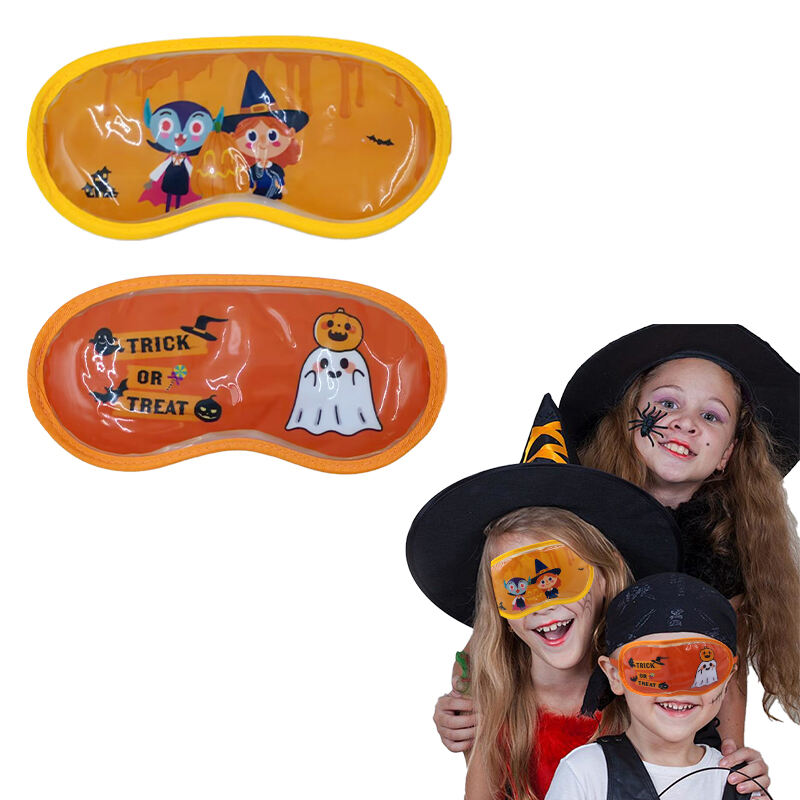Understanding Temperature-Based Pain Management Methods
Temperature therapy has been a cornerstone of pain management and injury recovery for centuries. Whether you're dealing with a fresh injury, chronic pain, or post-workout soreness, knowing when to apply heat versus cold therapy can significantly impact your healing process. This comprehensive guide will explore the science behind temperature treatments, their specific applications, and how to maximize their therapeutic benefits.
The Science Behind Temperature Therapies
How Cold Therapy Works
Cold therapy, also known as cryotherapy, works by reducing blood flow to a particular area, which can significantly decrease inflammation, swelling, and pain. When you apply cold to an affected area, it causes the blood vessels to constrict, slows nerve impulses, and reduces muscle spasms. This vasoconstriction helps minimize tissue damage and prevents excessive swelling in acute injuries.
The body's response to cold therapy includes reduced metabolic activity in the treated area, which helps limit tissue damage and inflammation. Cold temperatures also have a numbing effect on nerve endings, providing natural pain relief without medication.
Understanding Heat Therapy Mechanisms
Heat therapy operates on the principle of vasodilation – the widening of blood vessels. When you apply heat to an area, it increases blood flow, bringing oxygen and nutrients to the affected tissues while removing metabolic waste products. This enhanced circulation helps muscles relax, reduces stiffness, and promotes healing in chronic or recurring conditions.
The increased blood flow from heat therapy also helps improve tissue elasticity, making it particularly effective before stretching or exercise. Heat can penetrate deep into muscles and joints, providing lasting relief from pain and stiffness.
When to Apply Cold Therapy
Acute Injury Management
Cold therapy is most effective in the immediate aftermath of an injury, typically within the first 48-72 hours. It's the go-to treatment for acute injuries such as sprains, strains, and bruises. When tissue damage occurs, the body's natural inflammatory response can cause excessive swelling and pain. Cold therapy helps control this response and minimize tissue damage.
For optimal results, apply cold therapy for 15-20 minutes at a time, several times per day. Be sure to wrap ice packs in a thin towel to protect your skin from direct contact with ice.
Post-Exercise Recovery
Athletes often use cold therapy after intense training sessions or competitions to prevent excessive inflammation and reduce muscle soreness. Cold water immersion or ice baths can help reduce exercise-induced muscle damage and accelerate recovery time. This application of heat versus cold therapy is particularly beneficial for high-impact activities that cause microscopic muscle damage.
Optimal Uses for Heat Therapy
Chronic Pain Management
Heat therapy excels in treating chronic conditions such as arthritis, old injuries, and persistent muscle tension. The increased blood flow helps relax tight muscles and can provide significant pain relief for conditions that have persisted for weeks or months. Regular application of heat therapy can help maintain flexibility and reduce the frequency of pain flare-ups.
For chronic conditions, applying heat for 20-30 minutes several times daily can provide cumulative benefits. Many people find morning heat therapy particularly helpful in reducing morning stiffness and preparing muscles for daily activities.
Pre-Activity Preparation
Using heat therapy before physical activity can help prepare muscles and joints for movement. The increased blood flow and improved tissue elasticity make it an excellent warm-up tool. This is especially beneficial for people with chronic conditions or those who experience regular muscle stiffness.
Combining Heat and Cold Therapies
Contrast Therapy Techniques
Some conditions benefit from alternating between heat versus cold therapy, known as contrast therapy. This approach can be particularly effective for chronic injuries that have moved past the acute phase but still require management. The alternating temperatures create a pumping effect that can help reduce swelling while promoting healing blood flow.
When practicing contrast therapy, typically start with heat for 3-4 minutes, followed by cold for 1 minute, and repeat this cycle several times. Always end with cold to prevent any residual swelling.
Progressive Treatment Plans
Many injuries require a progression from cold to heat therapy as they heal. Starting with cold therapy during the acute phase helps control inflammation, while transitioning to heat therapy later helps promote healing and restore normal function. Understanding this progression is crucial for optimal recovery.
Safety Considerations and Best Practices
Temperature Control and Duration
Whether using heat versus cold therapy, proper temperature control is essential to prevent tissue damage. Cold therapy should never be applied directly to the skin, and heat therapy should be comfortably warm, not hot. Monitor your skin's response and remove the therapy if you experience discomfort or unusual sensations.
The recommended duration for either therapy is typically 15-20 minutes, with at least 2 hours between applications. This allows your body's natural temperature regulation to normalize between treatments.
Medical Precautions
Certain medical conditions may contraindicate either heat or cold therapy. People with circulatory problems, diabetes, or decreased sensation should consult healthcare providers before using temperature therapies. Additionally, neither therapy should be applied to open wounds or areas with poor circulation.
Frequently Asked Questions
Can I use heat therapy immediately after an injury?
No, heat therapy should not be used immediately after an acute injury as it can increase inflammation and swelling. Wait at least 48-72 hours after an injury before considering heat therapy, and start with cold therapy instead.
How long should I continue using cold therapy for an acute injury?
Continue using cold therapy for acute injuries for the first 48-72 hours, or as long as swelling and inflammation persist. After this period, you can transition to heat therapy if there's no residual swelling.
Is it safe to sleep with a heating pad?
It's not recommended to sleep with a heating pad as it can lead to burns or tissue damage. Always use heat therapy while awake and alert, and follow the recommended 15-20 minute duration guidelines.
Can I apply heat or cold therapy over clothing?
While it's possible to apply therapy over thin clothing, the effectiveness may be reduced. For optimal results, place a thin towel between your skin and the temperature source to protect your skin while allowing adequate temperature transfer.

